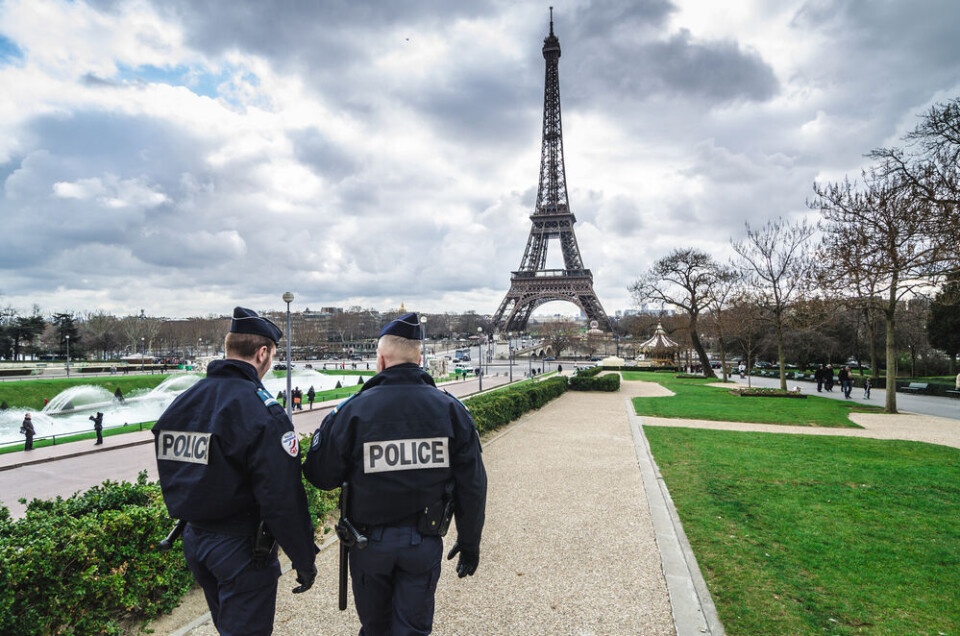-
Top Paris restaurants to sell off 20,000 tableware items
Pieces set to go on sale include glassware, cutlery, and silverware, as well as bistro tables and chairs. Money raised will go in part to charity
-
2025 world economy rankings: France classed above the UK and US
France’s low inflation rate helped it beat many other nations
-
Speed, alcohol, drugs: French ski resorts take action
Behaviour of some skiers a cause for concern as severity of injuries worsens
Paris tourist murder: knife attacker had been under surveillance
‘His psychiatric problems made it more difficult’, says police prefect

The perpetrator of Saturday’s (December 2) fatal hammer and knife attack in Paris was known to the police and security services, but his complex psychiatric profile “made surveillance more difficult”, the police prefect has said. Here is what has been revealed about him and the stabbings.
The attacker, Franco-Iranian Armand Rajabpour-Miyandoab, 26, was known to police.
In 2018, he was imprisoned for attempting to go to the area of Iraq and Syria then controlled by the terrorist organisation Daesh.
Following his release in 2020, he was put under heightened individual monitoring via the Mesure individuelle de contrôle administratif et de surveillance (MICAS) and on the security watchlist Fiché S.
Read more: What does the term ‘fiché S’ mean in France?
However, Paris police prefect Laurent Nunez says Rajabpour-Miyandoab was a difficult profile to track “due to his psychiatric problems”.
“He had an underlying level of radicalisation along with psychiatric disorders which can sometimes confuse the picture and make the analysis difficult for the intelligence services,” he said.
“He required a great deal of attention, which was not always under the remit of the security services.
“He had a great deal of involvement with doctors, the courts and liberty judges.”
One such judge denied authorisation for security agency DGSI to visit Rajabpour-Miyandoab in October 2020.
The confusing administrative picture was compounded by Rajabpour-Miyandoab’s own ambiguous relationship with the radical Islamic movements.
“On his release he had a sort of hatred towards Islam because of what he had been through in prison,” his mother told news outlet L’Obs.
“He felt 100 % French. On his release he had a love for France.”
However, a security source told L’Obs that by spring 2022 Rajabpour-Miyandoab was considered “highly influenceable” and “highly unstable.”
FranceInfo reported that his doctor said he had stopped taking his psychiatric medications in March 2022, although his last psychiatric evaluation in 2023 revealed “no danger.”
“Current events may have pushed him over the edge”, said the source in L’Obs, who added that 20% of the 5,000 extremists tracked by security services have psychiatric problems.
How did the attack unfold?
At around 21:00 on Saturday (December 2) evening, Rajabpour-Miyandoab stabbed a German tourist near the Eiffel Tower. The victim, a 24-year-old nurse born in the Philippines, died of his wounds.
The victim’s partner was unharmed physically but left in an “extreme state of shock”, said Interior Minister Gérard Darmanin.
Rajabpour-Miyandoab fled the scene, crossing to the north side of the Seine.
He then attacked two more people: a 66-year-old British tourist, who was struck around the eye with a hammer-like object, and a 60-year-old French man.
The attacker was then tasered by police and taken into custody.
Read more: How did the Paris terrorist attack on November 2 happen?
The two victims have since been discharged from hospital. Both are “in good health,” according to Health Minister Aurélien Rousseau.
The attacker told police that "he could not tolerate so many Muslims dying in both Afghanistan and Palestine" and that he blamed France for “what is happening in Gaza", said Mr Darmanin.
Minutes before the attacks, Rajabpour-Miyandoab posted a video online announcing his intentions.
President Macron was quick to call it a terrorist attack, writing on X (formerly Twitter):
“The anti-terrorism prosecutor will take charge of the case to bring all the elements of this case to light so that justice can be done in the name of the French people.”
Read more
Teacher killed, two injured in terrorist knife attack at French school
























